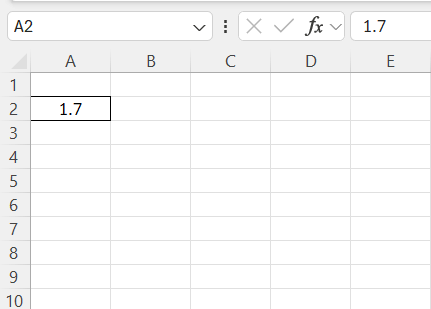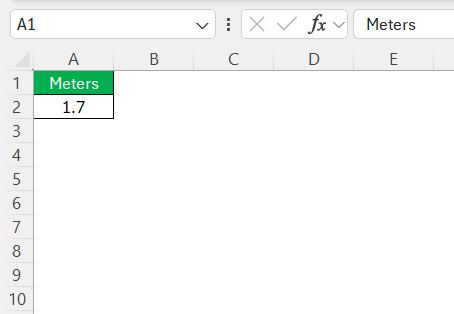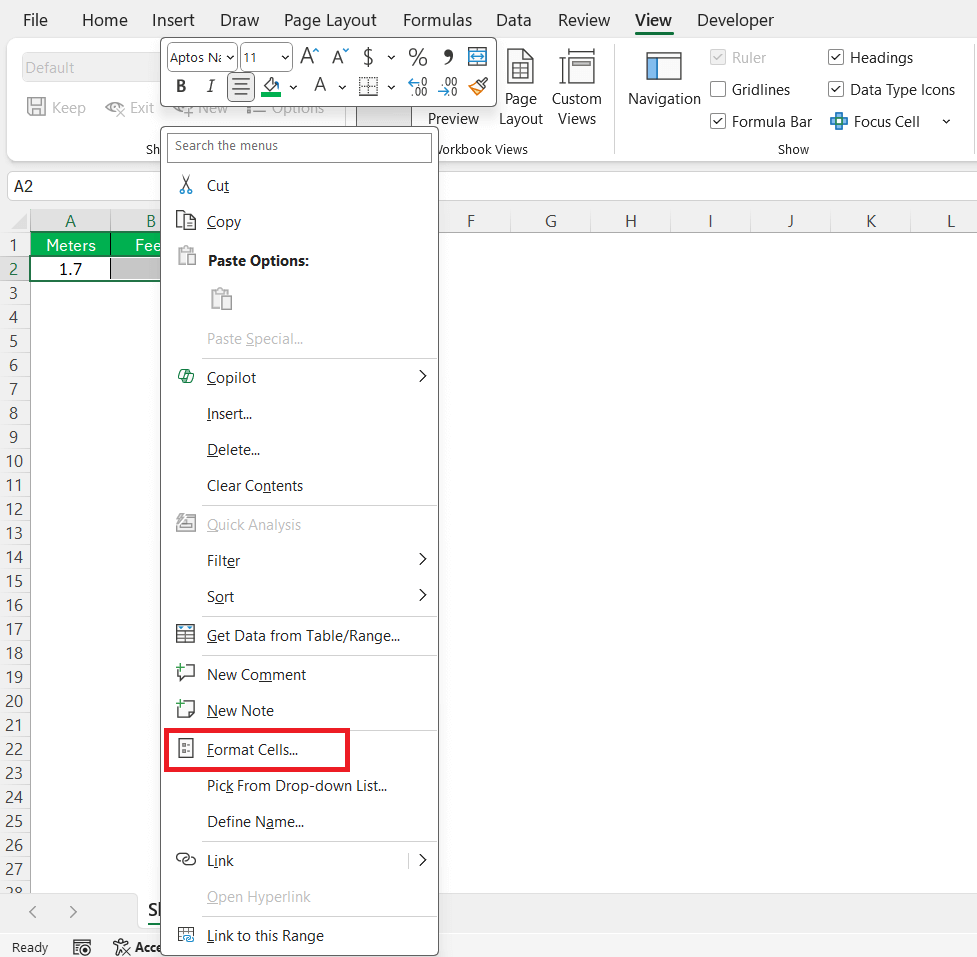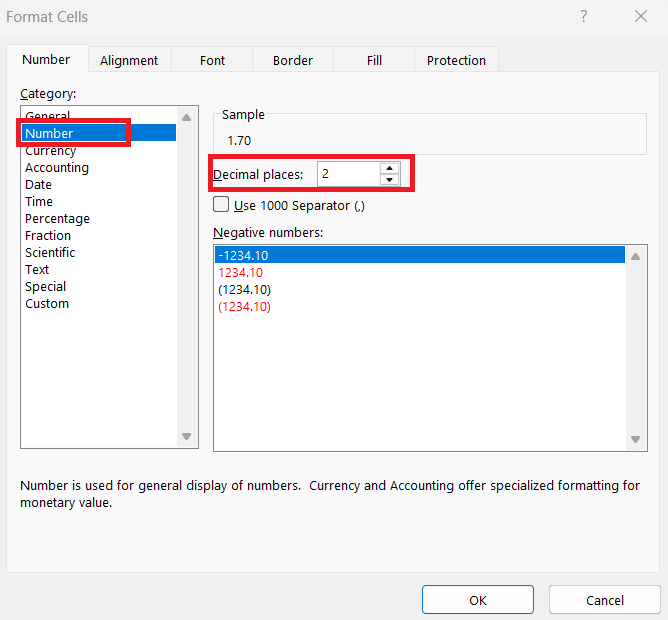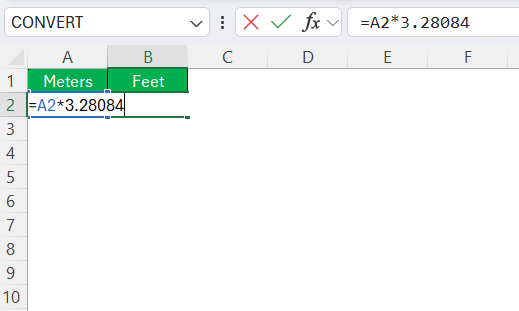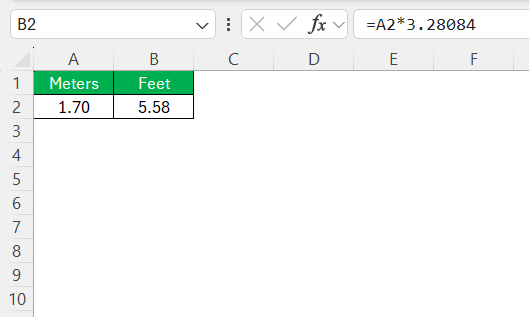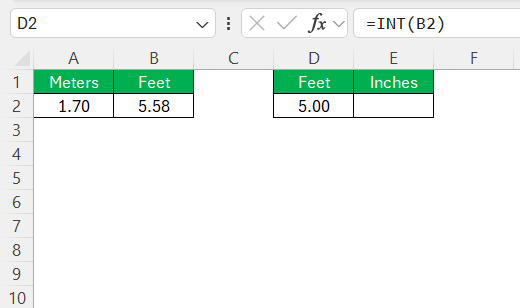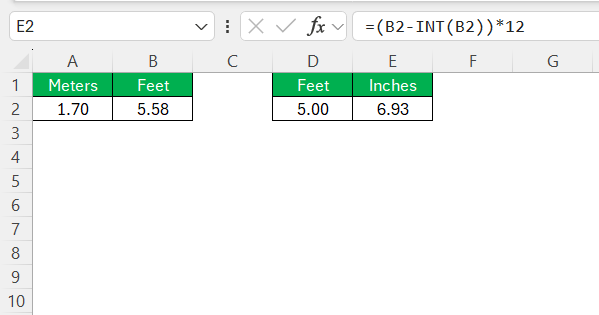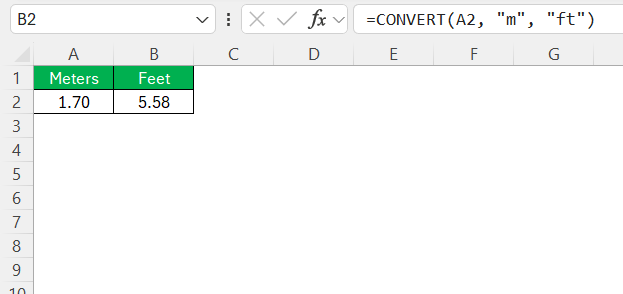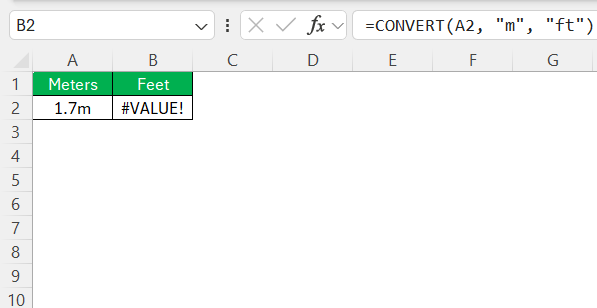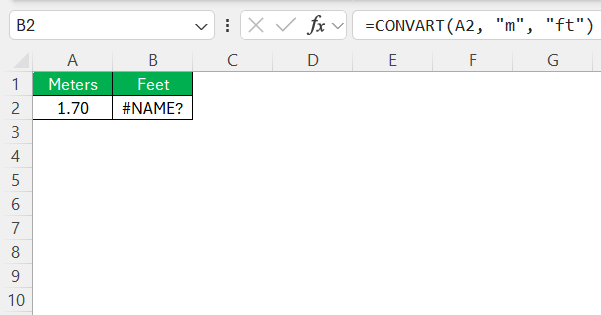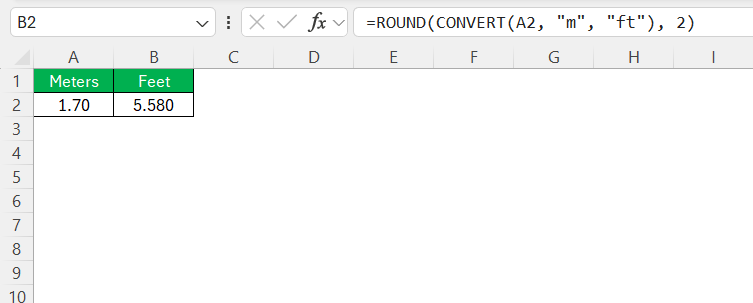Converting measurements from meters to feet is a common task, especially when working with international data. I’ve found that Excel offers a seamless platform to handle such conversions efficiently. Leveraging Excel’s robust calculation capabilities can streamline this process, ensuring you achieve precise results with minimal effort. In this guide, I’ll walk you through a step-by-step approach to converting 1.7m to feet, equipping you with the tools needed for all your measurement conversion needs.
Key Takeaways:
- Begin by entering the correct meter value (e.g., 1.7) in a clearly labeled Excel column to ensure precision and clarity.
- Use the Format Cells dialog to apply number formatting and set appropriate decimal places—typically two—for clean, consistent output.
- Apply the formula
=A2*3.28084or use theCONVERTfunction to quickly and accurately convert meters to feet. - Separate the whole number using
INT()and convert the decimal part to inches using=(value-INT(value))*12for detailed measurement reporting. - Watch for formula errors like
#VALUE!or#NAME?, and use rounding functions or Excel’s error-checking tools to maintain data integrity.
Table of Contents
Setting Up Your Excel Sheet
Inputting Data Correctly
When inputting data in Excel, accuracy starts with correctly entering the initial figures. First, you should open a new or existing spreadsheet where your data can be stored. Click on a cell where you wish to enter the measurement; type “1.7” to represent the meters.
This ensures that the data you work with aligns with your desired level of precision. Name the column “Meters” for clarity, which can help in the organization of your worksheet, especially if you’re dealing with multiple sheets or datasets.
Formatting Cells for Precision
Formatting cells in Excel enhances precision and ensures that your data is presented clearly. Begin by selecting the cell or range of cells where you’ve entered your measurement data. Right-click and choose “Format Cells” from the context menu; this will open the Format Cells dialog box.
Navigate to the “Number” tab and select “Number” to ensure numerical accuracy, then adjust the decimal places to your requirement, typically two decimal places for meter to feet conversions.
This level of precision is crucial for technical accuracy and readability, especially when dealing with data that influences critical decisions or reports. Remember to apply consistent formatting across related cells to maintain uniformity in your spreadsheet.
Step-by-Step Conversion Process
Converting 1.7m to Feet
Converting 1.7m to Feet in Excel is straightforward with the help of a simple multiplication formula, given that 1 meter equals approximately 3.28084 feet. To convert 1.7 meters to feet, click on an adjacent cell where you’d like the converted value to appear. Enter the formula =A2*3.28084, assuming “A2” is the cell containing “1.7”.
Press “Enter,” and Excel will display the result, which should be approximately 5.577428 feet.
This conversion process is efficient and can be applied to larger datasets by dragging the fill handle to apply the formula to multiple cells, speeding up your workflow for bulk conversions.
Translating Decimal Feet to Inches
Once you’ve converted meters to feet, you may need to further break down the decimal feet into feet and inches, particularly for applications like construction where precision in inches is necessary. To do this, first separate the whole number from the decimal. In Excel, if your converted value is in cell “B2”, for instance, you would use =INT(B2) in a new cell to extract the whole feet. This gives you just the feet portion.
For the inches, calculate the decimal part by subtracting the whole feet from the total feet using =B2-INT(B2). Then, multiply the result by 12, using =(B2-INT(B2))*12 to convert the fractional foot into inches.
This way, you can have both feet and inches clearly detailed in your spreadsheet, allowing you to communicate measurements comprehensively.
Using Functions for Accuracy
Leveraging Excel’s built-in functions can greatly enhance accuracy in measurement conversions. For converting meters to feet, the CONVERT function is particularly useful, as it minimizes manual calculation errors. To use this, select a cell and enter =CONVERT(A2, "m", "ft"), where “A2” contains your meter value.
This function automatically converts the meter measurement to feet with precise accuracy, simplifying your task significantly. Utilizing these functions streamlines the conversion process, especially when handling extensive datasets.
Troubleshooting Common Issues
Fixing Formula Errors
When dealing with formula errors in Excel, identifying and correcting them quickly is key to maintaining data integrity. Common errors such as #VALUE! or #NAME? often arise from improper formula syntax or referencing non-existent cells. To troubleshoot, double-click on the cell with the error to open the formula and verify that all the parts of the formula are correct.
Ensure that the cells referenced in your formula exist and contain relevant data. If you see #NAME?, it could indicate a typo in the function name. Cross-check your syntax against Excel’s function library to ensure accuracy.
In cases where Excel cannot automatically detect and correct an error, use the “Error Checking” tool found in the “Formulas” tab to guide you through potential problems.
Correcting these issues promptly ensures that your conversions and overall data operations remain accurate and reliable, allowing your spreadsheets to function as intended. Additionally, maintaining a habit of double-checking inputs and maintaining organized data will reduce the likelihood of formula errors in future tasks.
Addressing Measurement Discrepancies
Addressing measurement discrepancies is crucial to ensuring data accuracy in your Excel conversions. Discrepancies often occur due to rounding issues or incorrect input data. To minimize rounding discrepancies, use Excel’s ROUND, ROUNDUP, or ROUNDDOWN functions. For instance, applying =ROUND(CONVERT(A2, "m", "ft"), 2) will ensure uniform precision across your data.
If discrepancies persist, revisit the original data inputs to confirm they are accurate and meet the required precision level. Sometimes, variations arise due to unit conversion factors; double-check that you are using the correct factor (e.g., 1 meter = 3.28084 feet). Consistently applying validation checks, such as setting lower and upper limits for expected results, can catch outlier values early in the data entry process.
Lastly, document your conversion processes and methods used within your spreadsheet. This transparency not only aids in troubleshooting but also in explaining your methodology to collaborators or stakeholders, maintaining trust and clarity in your data presentation.
FAQs
How do I convert meters to feet in Excel?
To convert meters to feet in Excel, use the formula =CONVERT(A1, "m", "ft"), where “A1” is the cell containing the meter value. Excel’s CONVERT function simplifies the process by automatically applying the correct conversion factor. This method ensures accuracy and streamlines your workflow when dealing with multiple data points.
Can I automate unit conversions in Excel?
Yes, you can automate unit conversions in Excel by using the CONVERT function in a column formula. Input the formula alongside your data, such as =CONVERT(A1, "m", "ft"), and drag it down to apply to additional cells. As new data is entered, the conversion updates automatically, making it ideal for dynamic datasets.
What if my conversion results seem off?
If your conversion results seem off, double-check the formula for accuracy, ensuring the correct units are specified (e.g., “m” to “ft”). Verify that input values are correctly entered without any errors or typos. Additionally, ensure there’s no accidental use of incompatible functions or mismatched units.
What is the easiest way to convert meters to feet in Excel?
The simplest method is to multiply the meter value by 3.28084 (since 1 meter ≈ 3.28084 feet). If the meter value is in cell A1, you’d enter =A1*3.28084 in an adjacent cell. Excel instantly calculates and displays the feet equivalent. This method is accurate and ideal for small datasets or single values.
Can Excel also convert the decimal feet into inches automatically?
Yes. First, extract the whole feet using =INT(value) where “value” is your feet result. Then subtract the whole part using =value-INT(value) and multiply by 12 to get inches: =(value-INT(value))*12. This gives you both components clearly, useful for tasks like construction estimates or blueprint measurements.
John Michaloudis is a former accountant and finance analyst at General Electric, a Microsoft MVP since 2020, an Amazon #1 bestselling author of 4 Microsoft Excel books and teacher of Microsoft Excel & Office over at his flagship MyExcelOnline Academy Online Course.

